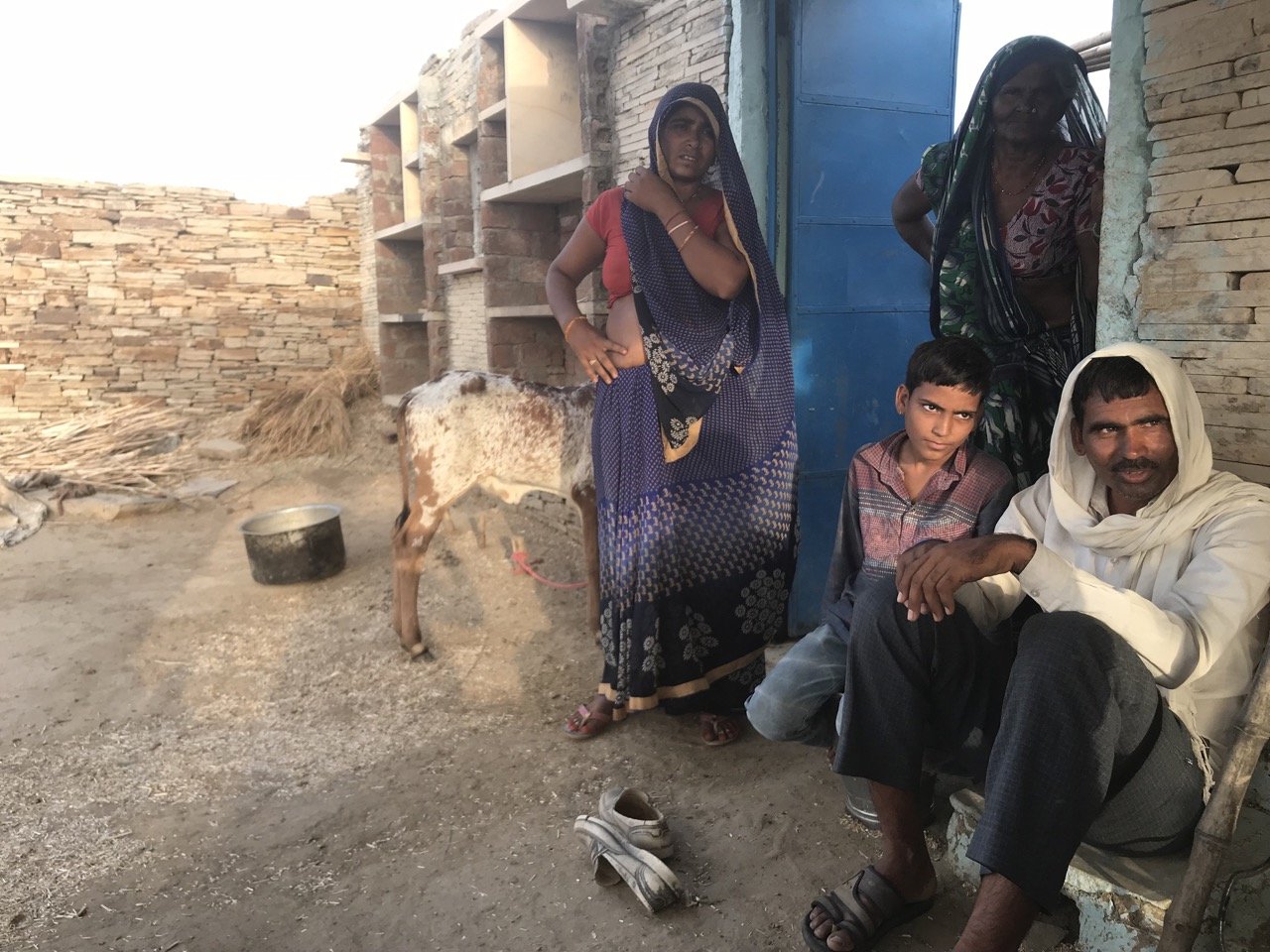I Surveyed 200+ Indian Villages! Busting 10 Myths On Rural India
As an NRI I was crazy about India and wished to see it inside out. After moving to India, I enrolled on surveying villages for the Madhya Pradesh elections (with Arthashatra org -- credits at end of article).
The goal is Jaati-Samikaran— find the caste breakdown of a district and push it into a statistical model to predict voting patterns.
How we did it-- We’d pick a constituency and drive the car literally into any village. Any village! We’d take any left turn. Any right turn. Whatever we felt. It was so liberating to see India that way. We never knew who we’d meet. Or what we’d see.
Here are interesting Myths I broke from my experience!
Myth 1: SC, ST Same Thing, No?
We Indians speak the castes of SC and ST in the same breath.—“SCSTQUOTA”. My my— you have no idea. There is a marked, visible, talkable difference between them. We could tell. From a distance.
Schedule Castes (SC) were like us Urbans. They dress like us, they look like us, they drive vehicles like us, and they eat roti, subji like us.
The Schedule Tribes (ST) were unlike us. Their cottages, thatched. Their poverty, stronger. Their bodies, beautiful.
Me with some aanganwadi ladies. Notice the tribal lady in the yellow behind. I loved her colours & style!
They were open-minded about their bodies— Ladies wearing saris in the open, their clothes see-thru, they didn’t care, no one in the community cared. Their bodies were strongly built, crafted from daily labour, and skin beautifully wrinkled from sun exposure. They ate fish freshly caught in the river.
Overall, STs had a visibly different level of poverty— I’ll never take ST in the same breath as the SC, anymore!
Myth 2: Govt schemes are a waste
To urbans, the govt scheme “Awas Yojana ” sounds like a paper rusting brown inside a maroon cover, lonely on a desk at the central ministry. But we? We saw it in action. Awas Yojana is about building homes for the poor. Since all the houses are built the same— same blood-red bricks & height & structure, they made easy to spot from a-far. We went to villages in the whole Gwalior region— look there, Awas Yojana. Next village. Awas Yojana. Next village. Again, Awas Yojana. We went to another region (Satna near Khajuraho)— what do we see? Awas Yojana. Next village, Awas Yojana. Again, next village. Awas Yojana
This thing works guys.
Myth 3: Villagers are Violent
I can't forget this lovely family and their sweet home. The breezy day. The soft sun!
At Mitavali village, I was talking to a family outside their doorstep, the soft evening sun in my eyes, and suddenly two men joined the conversation— one with an axe, one with a large canister, which my Bollywood mind assumed carried petrol. My heart rate shot up rapidly— the kind when you’re being chased with a gun to be shot dead. Not that I have been chased with a gun. I’m guessing that’s how it would feel. I thought “They are going to kill us. Burn us down”. My heart beat like a flapping chicken for a good 20 seconds— till I realised — how stupid! The canister had water in it and axe & sickles are farmer implements! It was crazy to see how us urbans look at villagers, as if they are violent.
Myth 4: NRIs are the saviour’s Indian villagers need
At the end of the day, the poor end up helping the poor.
My NRI instinct was to cry and pity villagers and believe that NRIs are the key to solving poverty in India and that I need to shower dollars on villagers, because only I, the NRI can be their saviour.
Oh dear, stop.
The max help the poor get in rural Indian villages is from other poor people. They take them to hospital, they lend money, they give food. In Sheopur district, a shopkeeper told us of a blind widow in his neighbourhood with two small kids— the kids beg for sustenance. They are helped daily by the neighbourhood families with food. Kinda hard for the NRI to be around when this happens.
Myth 5: Talking about Caste is awkward to Villagers
Villagers talk about caste in a matter-of-fact-way. Since we had to survey different castes to catch their voting patterns, we’d identify villagers by their caste. So we’d ask “Where are the houses of these castes x,y,z?”. A friendly man would say, “Thakur’s houses are there” (he points), “There are a few brahmin's houses there” (points) or “Here are the kushwahas” (sweeps hand).
Growing up in Pune, no one cared about caste. I never heard of it in school or with friends. It was never a barrier or a topic of conversation. But in villages, it is known soon. I was with 2 other girls, Turns out all three of us are brahmins. “Trivedi, Tripathi, Dave”. Once, during a conversation with a locally important man, he called us “Tridevi-yan! Teeno brahmins!“ (Three Goddesses). My colleague told me they were talking to us because we are brahmins. It made me laugh. WTH seriously? What an insane flex— I’ve never seen this flex my city life, or any of my lives past and future whatsoever.
Myth 6: You’ll live longer in villages
No, if you get into politics.
In Rewa district, a local parishad man told with a straight face “Woh? Usska KATAL ho gaya” (he motions slicing his neck with a karate hand). “Teen sarpanch they. Teeno ka KATAL ho gaya”. (“There were three sarpanchs. All three got murdered”). It’s normal apparently! We saw this theme in many villages— men without hands, women & men martyred to injustice— but not a shadow of anger or hate from the villagers. Only acceptance. A sort of moving-on. We saw that villagers are very realistic about death (or murder).
Myth 7: India doesn’t have a consistent greeting style like “heyhowareya”.
They do. And it’s Water!
At any place, the first thing we were offered was water. EVERYWHERE. NO EXCEPTIONS. I’ve got to write that in caps, so you understand how prevalent it is. If we visited a house or a group sitting under a tree, some chap would run and get that red plastic neelkamal chair, and a steel jug with water.
We learnt social norms
1. Never refuse water.
2. Always drink what they offer, even if you are not thirsty.
3. All water tastes different.
4. Drink by pouring from top of the glass.
5. Take 2 or more sips to show you needed it and appreciate it
Myth 8: Education is the biggest expenditure for villagers
A tribal area. He was showing us his name printed in a newsletter or sorts. It was his prime achievement. Very touching!
Medical and marriages are the biggest expenditure for rural areas. Education yes, but for many, education is a choice. Or they get it cheaper or free.
Myth 9: News is late in villages
News travels lightning-strike-KABOOM-fast in villages. We’d start talking to villagers at a tea stall or near a banyan tree or in a home — within 3-5 mins few men on a bike or the sarpanch would show up.
The sarpanch (the village leader), wouldn’t do much with the info but I’d love to tell you, they come in all shapes and sizes. On one side, a sarpanch we met was a traditional, old, turbaned man with a stick, with long tanned muscularly toned legs. The other sarpanch we met, was a young grinning funny man, and the villagers were teasing him by patting his bald head and jokingly calling him a ‘useless sarpanch’. He had two cute little daughters and helped us get to the next village by leading the way on his ‘fatfatti’ bike that blasted black exhaust with his little girls clinging on to him. HOW CUTE IS THAT??
Myth 10: Alcohol is fun so why ban it!
Alcohol is a serious problem for Villagers.
In many districts, Men earn in the day and spend it on alcohol at night. Why? Govt gives ration for Re 1. Villagers have basic food supplies at home, and those with no ambition in life throw their morning money on alcohol every night.
It’s a great tool for local MLAs to get vote share. They hold events with free alcohol. A villager told us “We women were shoo’d away from the event because we protested against our husbands getting crazy drunk”.
Alcohol may be locally produced, illegally. In Sheopur, a man told us “dus ghar hai” (~“There are 10 local tribal houses that make this alcohol”). We were curious to see, so we handed Rs 50 to a man, who pronto took his bike and returned in 10 mins handing over a plastic with clear liquid in it. “One of these can knock a man out”, they said smiling. We kinda freaked out and gave it back to them— obviously, we didn't want to consume it. It was for our amusement
In-house produced alcohol--Rs 50
I had about 30 more things to tell you— how govt schemes are a subsidy incentive, how corruption should be your expectation, how there is talent and intelligence everywhere in India, how villages on borders of states have a different culture from the heartland, how life is simple, uncomplicated, and yet brutal, how young men go to J&K for 6 months of labour work, and 6 months chill at their home village (Its the life you want), how politics is everywhere & a great way to make money, how power IAS is, and how powerful the MLAs may be over the IAS, how everyone has a phone, how people treat others as their own (our Driver didn’t sleep well, so a random villager patted him to sleep on his khatia).
Everything you want is the life the villagers are living— raw, authentic and full of hard work and love.
(Credits to Rajat Sethi & @shubhrasta from Arthashatra Org)





